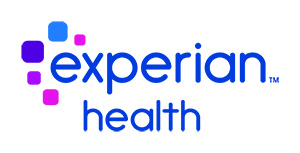Best Practices for Improving Patient Collections
Sponsored by Experian Health

Given the rise in high-deductible health plans, along with decreasing payer reimbursement, patients are being held increasingly responsible for larger portions of their healthcare bills. In turn, healthcare organizations are realizing the importance of a strong patient collections effort. In the white paper Technology and Data-Driven Decisions Driving Best Practices for Patient Collections, Experian Health analyzes the results of two recently fielded surveys aimed at learning how organizations approach the process of obtaining payment from patients. The paper reviews both an HFMA-led survey and an Experian-facilitated one, discussing the current state of patient collections, as well as emerging best practices to improve performance.
In June 2017, during HFMA’s Annual National Institute (ANI) in Orlando, Fla., the organization’s research division surveyed healthcare leaders—mainly CFOs and other senior financial executives—on a variety of topics related to pre- and post-service patient collections. In general, survey results revealed that organizations are working with varying degrees of success to offer more patient-friendly financial interactions, using technology and data to inform and drive patient engagement.
To further understand how organizations can elevate performance in this area, Experian Health conducted a follow-up survey with its customers in November 2017. This research, along with the HFMA survey, points to several best practices in patient collections that organizations are pursuing.
Using patient portals to increase engagement. The HFMA survey revealed that portal use is almost ubiquitous with 90 percent of financial executives interviewed indicating they have some type of portal in place—and the majority are satisfied with the technology. That said, there is room for growth in fully optimizing these kinds of solutions. Although most survey respondents use portals to accept patient payments, fewer rely on them for other tasks, such as appointment scheduling, communications, delivering patient estimates, facilitating payment plans, and so on. Limited access to disparate data sources and less-than-optimal interoperability are substantial roadblocks standing in the way of greater portal use.
Asking for up-front payment. It used to be that healthcare organizations shied away from asking patients for payment in advance of service; however, that seems to be changing. According to the white paper, more than half of organizations indicate they try to collect 100 percent of a patient’s financial responsibility in advance, and almost all offer some form of payment plan or other incentives to at least obtain a portion of what’s owed.
To better enable up-front collections, organizations are starting to use credit data to understand a patient’s financial situation and how that will affect his or her ability to pay. Not only does this meet patients where they are on their financial journey, but it allows them to focus less on their healthcare bills and more on their health.
Collecting payment after treatment. Although shifting collections to the beginning of the patient encounter has become a more widely accepted revenue cycle strategy, organizations should still have a robust process in place to collect money on the back end. However, some organizations have hesitated to create such a program: HFMA’s survey noted that one in four organizations did not have a formal program in place.
In addition to communicating the importance of a back-end collections program, the white paper explores various approaches to establishing a patient-friendly and effective one. Items discussed include leveraging financial counselors and third-party resources to help patients navigate the financial process.
Using technology and data. An overarching theme present in the white paper is that to truly move the needle on patient collections and make the effort more patient-centric, organizations must better leverage technology and data analytics. Although providers are starting to employ these tools, many are not completely satisfied with them. Some issues cited in the HFMA survey include outdated interfaces, lack of interoperability between systems, and inadequate data-management capacity. Finding solutions that address these and other frustrations may help organizations improve their use of automated solutions.
Experian Health’s white paper explores many of the advantages and challenges involved in creating and maintaining a patient collections program.
Read the full white paper here.
About Experian Health
Today, more than 3,300 hospitals and 10,000 other healthcare organizations representing 500,000+ providers—more than 60 percent of the market—partner with Experian Health. Our clients make smarter business decisions, boast a better bottom line, and foster stronger patient relationships by using our industry-leading revenue cycle management, identity management, patient engagement, and care management solutions. For more information about Experian Health, visit www.experianhealth.com.





